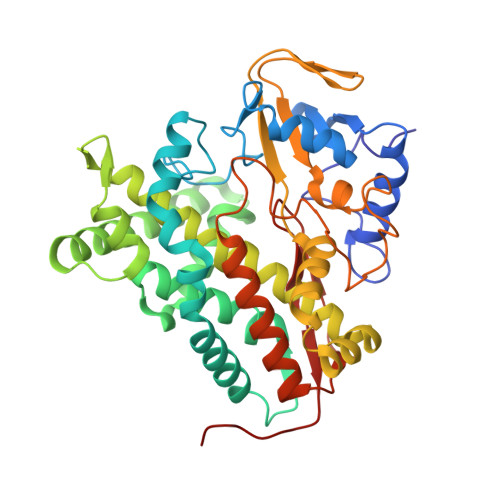P450cin active site water: implications for substrate binding and solvent accessibility.
Madrona, Y., Hollingsworth, S.A., Khan, B., Poulos, T.L.(2013) Biochemistry 52: 5039-5050
- PubMed: 23829586
- DOI: https://doi.org/10.1021/bi4006946
- Primary Citation of Related Structures:
4L6G, 4L77, 4LHT - PubMed Abstract:
In P450cin, Tyr81, Asp241, Asn242, two water molecules, and the substrate participate in a complex H-bonded network. The role of this H-bonded network in substrate binding and catalysis has been probed by crystallography, spectroscopy, kinetics, isothermal titration calorimetry (ITC), and molecular dynamics. For the Y81F mutant, the substrate binds about 20-fold more weakly and Vmax decreases by about 30% in comparison to WT. The enhanced susceptibility of the heme to H₂O₂-mediated destruction in Y81F suggests that this mutant favors the open, low-spin conformational state. Asn242 H-bonds directly with the substrate, and replacing this residue with Ala results in water taking the place of the missing Asn side chain. This mutant exhibits a 70% decrease in activity. Crystal structures and molecular dynamics simulations of substrate-bound complexes show that the solvent has more ready access to the active site, especially for the N242A mutant. This accounts for about a 64% uncoupling of electron transfer from substrate hydroxylation. These data indicate the importance of the interconnected water network on substrate binding and on the open/closed conformational equilibrium, which are both critically important for maintaining high-coupling efficiency.
- Department of Molecular Biology and Biochemistry, University of California, Irvine, California 92697-3900, United States.
Organizational Affiliation:




















